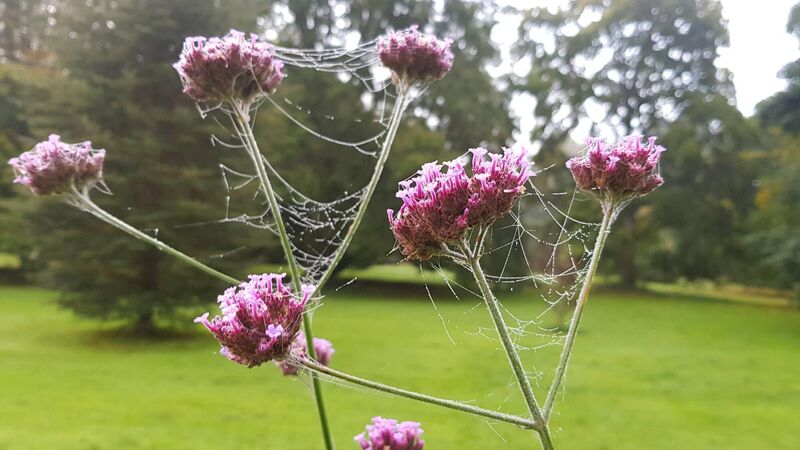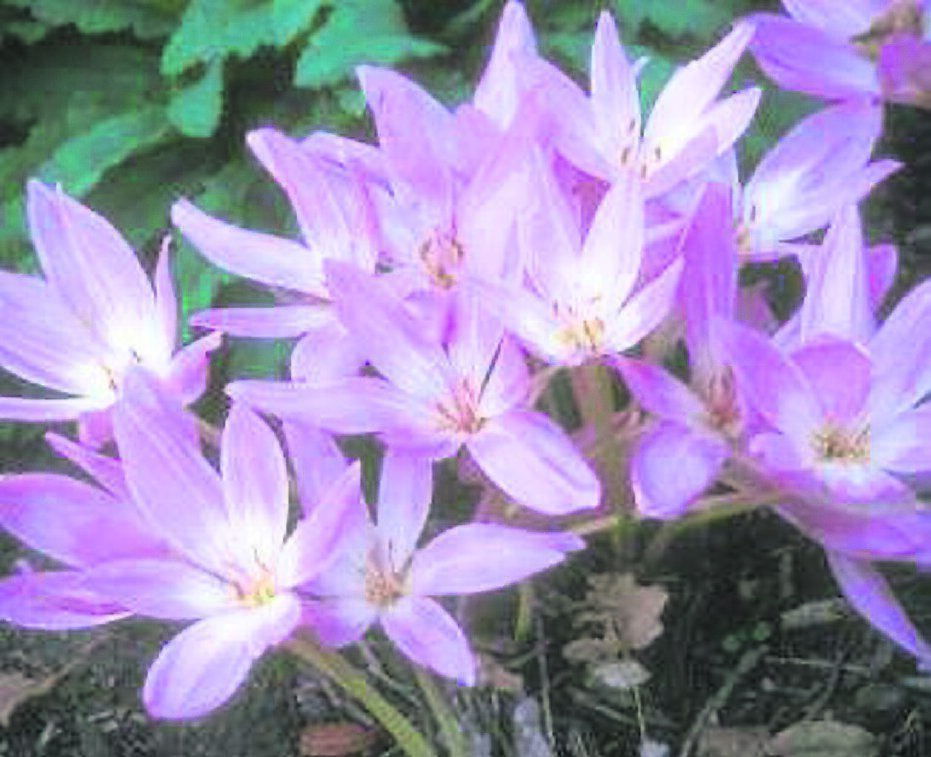In the Garden: Put colour and life into your autumn days

Spiders handiwork weaving the flowers of Verbena together.
AS the warm autumn sunshine is upon us, September is off to a good start and our hope of an Indian summer is becoming a reality!
September can be a good month in the garden, with the later flowering perennials coming into their own and a second flush produced by many plants cut back a few weeks ago.
One of the tell-tale signs of autumn approaching is the autumn crocus or Colchium appearing from seemingly nowhere in the lawn. They have different flower colours from white through to pink and purple, and the flower can be double or single, appearing before the foliage, qualifying their common name of ‘naked lady’.
Gladiolus are also having a moment and producing a riot of colour, they are a great cut flower, best harvested when the first buds are emerging, with the rest following in later days when brought indoors.
There are lots of new stems on climbing roses and now is an opportune time to tie in fresh new stems to replace old and tired stems on wall-trained plants.
Removing any damaged, diseased and dead growth will be of benefit now also. High winds over the last few weeks did some damage and there it is best to remove any cracked or damaged stems.
Roses did very well early in the summer this year, producing plenty of flowers, and continued dead heading during the summer months always pays dividends.
They do not like lots of rain, with fungal diseases like black spot and powdery mildew affecting many varieties badly. They do much better in dry and sunny weather to show off their colourful and often very blousy blossoms that become sodden and fade fast in the rain.
Spiders’ webs always become more evident in autumn as the heavier morning dew highlights the intricate designs, located strategically to catch flying insects in many cases.
They are particularly noticeable if you’re out for an early morning walk and a very beautiful sight - whether you like spiders or not.
They are also an important part of pest control in the garden, dealing with aphids, leaf miners, wasps, moths, flies and spider mites, to name but a few.
The next time you consider eliminating a spider in the garden, think of the benefits and balance this creature brings to the forces of nature at work in the world of plants and gardens.
A lot of colour in the garden is purple/blue/violet flowers at this time of year.
According to research, the most attractive colours for pollinating insects are yellow and blue and the least attractive is red. Insects see much more than we can, their eyes are engineered differently.
At this time of the year, sourcing nectar and pollen is important and it may not be as plentiful as the time goes on into the autumn months.

Having markers to help guide insects to food is important and flower colour is key in attracting pollinators to a plant.
There are monkshood, asters, heather, verbena, geranium, campanula and devil’s bit scabious, all offering signposts to pollinators on where to get the best nectar and pollen in town.
Consider this when taking a turn around the garden this autumn, and where there might be room for more later flowering food reserves for those pollinating partners that we work with in the garden.
As the vegetable beds empty and the soil is bare,it is good to get green manures sown as quickly as possible at this time of the year.
More often than not, I leave it too late, and as the temperatures drop into the autumn months, so do germination rates.
The sooner the green manure is sown now, then the better germination rates, and also chance for the crop to become established, ultimately giving better cover and protection for the soil over the winter months.
Phacelia and rye are a good combination and Fruithill Farms have a good range of different green manures on offer in varying amounts, depending on how big your area is, check out www.fruithillfarm.com for more details.
Cardboard and a mulch of some organic material such as homemade compost, grass clippings or manure can also be employed to protect the soil and add nourishment over the next few months.
Soil left bare from now until next spring is vulnerable to leaching of the nutrients, and with our rainfall amounts, that can have serious consequences.
We want the soil to retain as many nutrients as possible over the winter so they can be utilized by crops next year, not washed away into the waterways where they can cause harmful pollution by over-fertilizing rivers and lakes.
Laying the groundwork now and protecting and putting the soil to bed over the next few weeks will pay dividends next year.
Happy Autumn Gardening!

Plant of the Week
As a big fan of umbellifer flowers, many of which occur early in the growing season such as cow parsley, carrot, ammi, orlaya, hemlock and parsley. I am thrilled to find, which flowers later in summer into the autumn, adding interest, texture, colour, and benefits for pollinators too.
It has lovely delicate ferny foliage and gets to about 1.2 metres in height with a spread of about 90cm.
The flowers are frothy white and attractive seeds heads will follow.
It is a hardy perennial, which can be slow to emerge in the springtime and will do best in full sun or partial shade in a free-draining moisture retentive soil. A native to the Himalayas, this plant is a great addition for late flower and foliage interest in the garden.







 App?
App?


